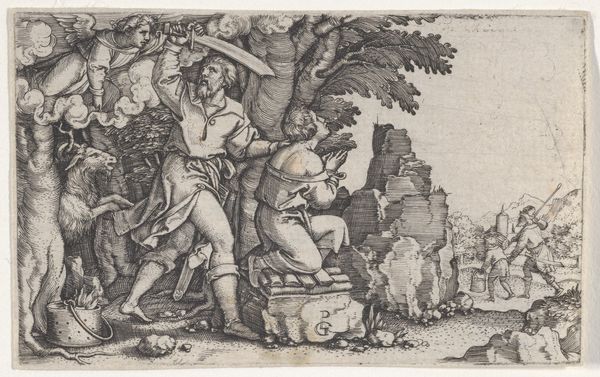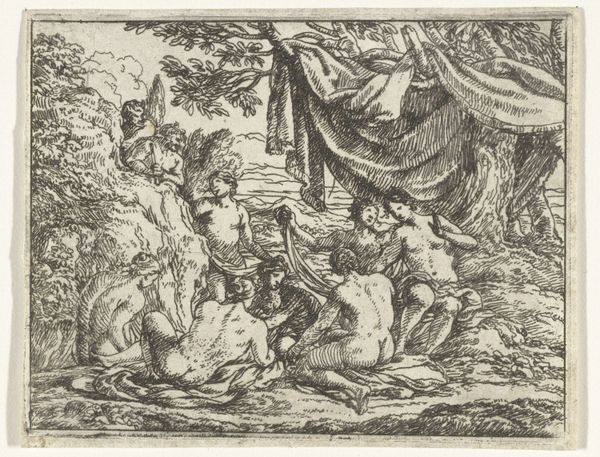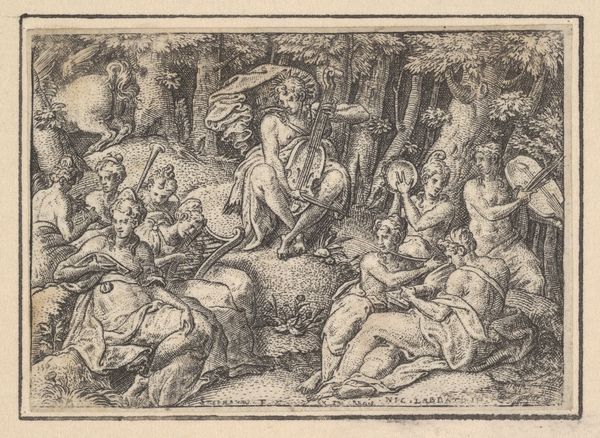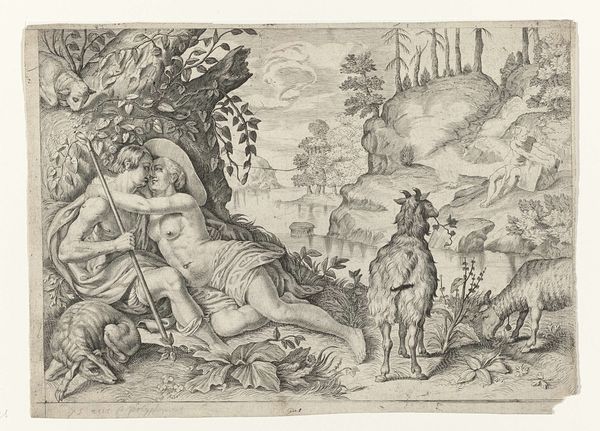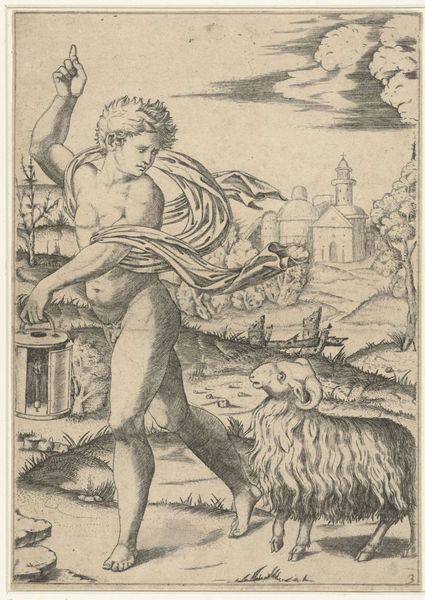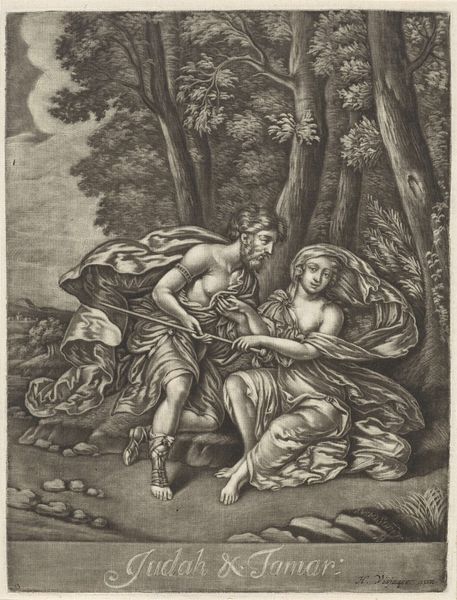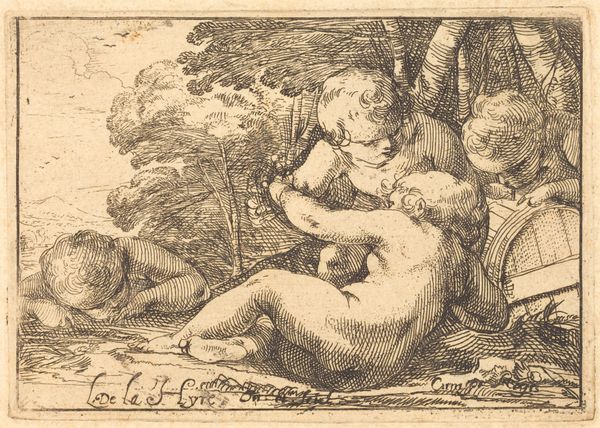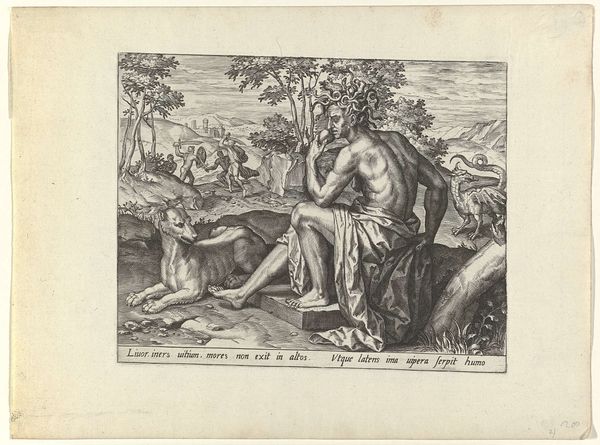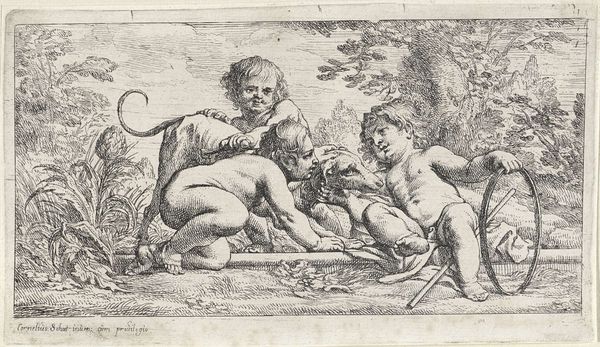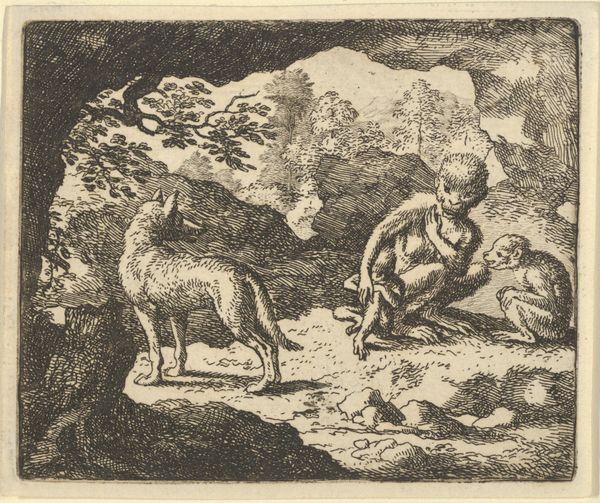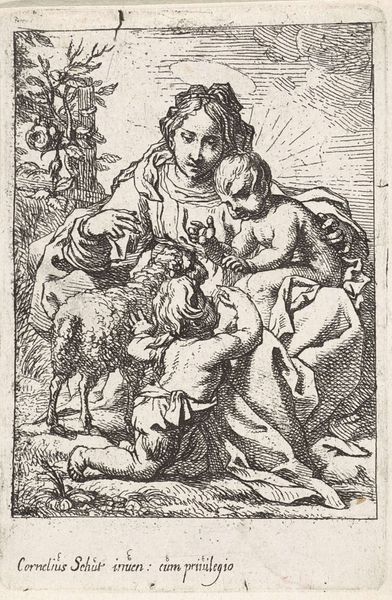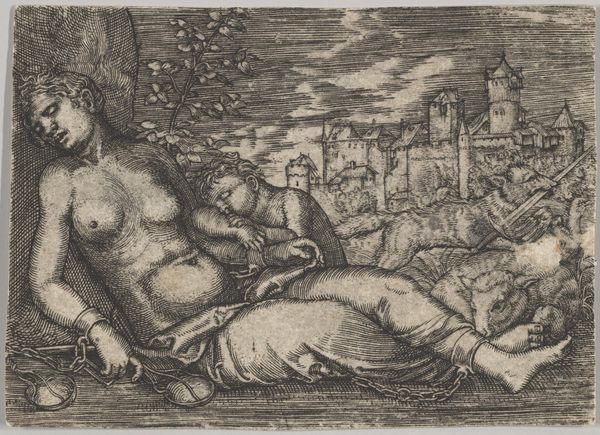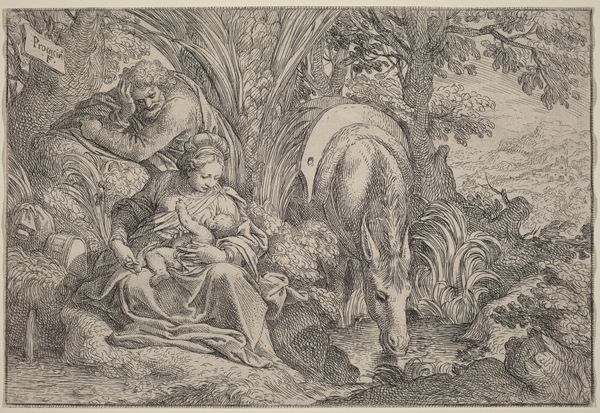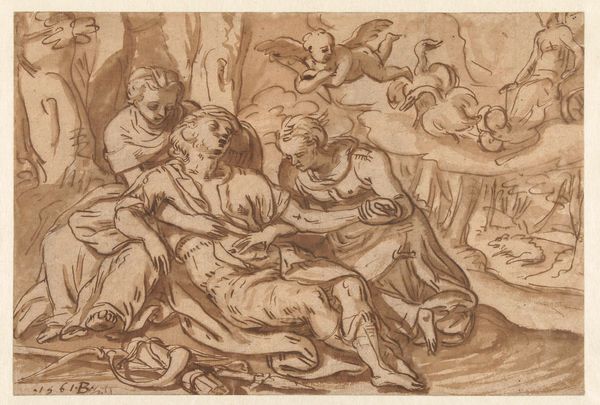
Dimensions: height 44 mm, width 66 mm
Copyright: Rijks Museum: Open Domain
Editor: We’re looking at "Mother with Two Children" by Barthel Beham, made sometime between 1512 and 1540. It's an engraving with incredibly fine lines that give the scene a sense of detail, and an intimacy. I find the figures captivating! What strikes you most about it? Curator: Indeed, the engraving technique lends itself to such precise detail. Note how Beham uses variations in the density and direction of line to create areas of light and shadow, defining form. This interplay between light and dark is key. Consider also how the composition leads the eye— from the children, across the reclining dog, and finally to the landscape with the castle in the distance. Editor: So, you are focusing more on the form of the art than the emotional context? Curator: Precisely. I am interested in how form constructs meaning. The positioning of the figures, their scale relative to the landscape, and the intricate linework all contribute to a sophisticated visual architecture. The textures— the soft fabric, the dog’s fur, even the bark of the tree— each is rendered with meticulous care, isn’t it? Editor: I do notice how everything looks so detailed! What would you say that contributes? Curator: The formal relationship is really compelling. Do you notice the castle's structural similarity to the form of the figures, despite being placed distantly? How does Beham create emphasis using those elements, and does the material support your interpretation? Editor: I never would have thought to compare the buildings with the mother! Now I see it—thanks for broadening my perspective. I learned that looking at form, structure and material creates a great emphasis and leads the eye. Curator: And I’m reminded of how powerful the semiotic analysis can be in the hands of someone willing to challenge perceived meanings.
Comments
No comments
Be the first to comment and join the conversation on the ultimate creative platform.
